Prillwitz has been building and installing wheat and corn flour mills for more than 90 years.
In contrast to other types of milling, in this case, the milling is carried out in such a way that the different parts of the grain can be separated into flours, semolina, hulls, etc.
Within wheat, we can handle soft wheat, medium-hard wheat and durum wheat. And as for corn; Flint corn, flour corn, yellow corn, white corn, etc. We also make milling installations for other cereals such as rye, chickpeas, etc.
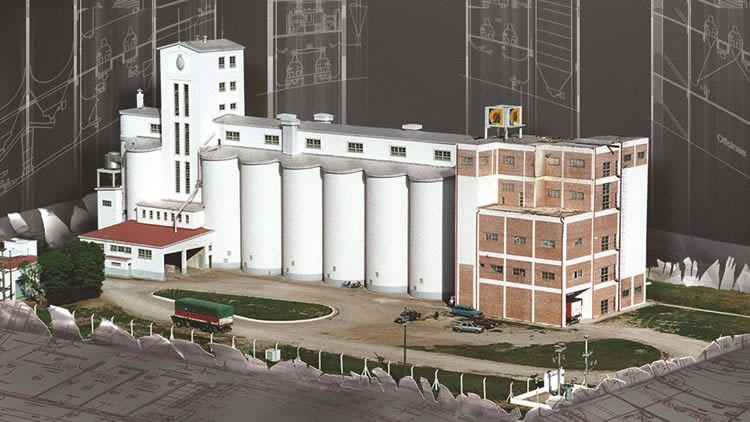
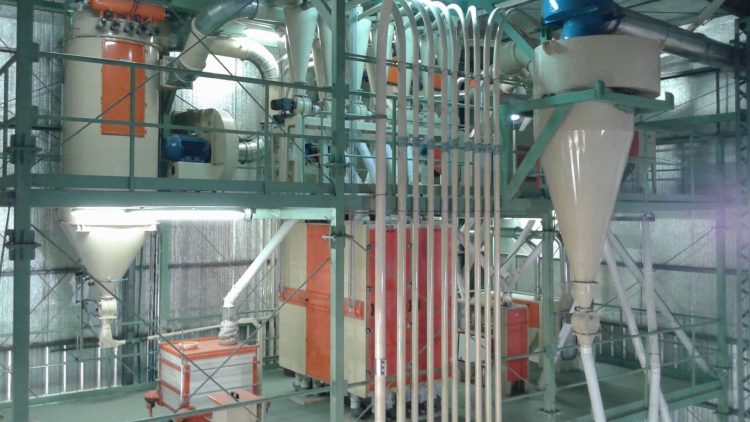
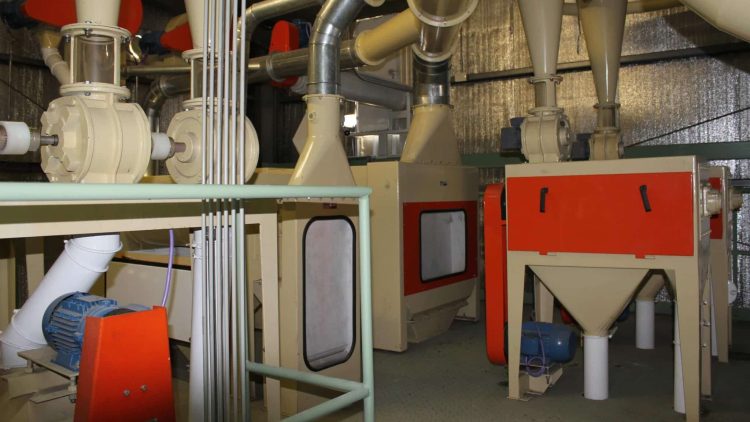
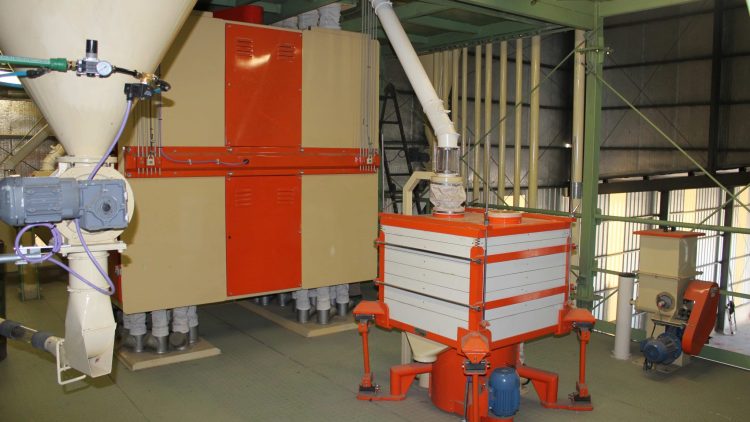
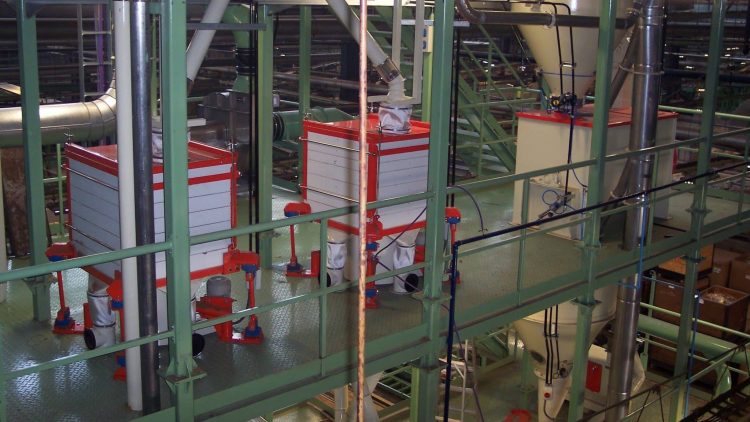

What is a flour mill?
As mentioned, milling with the objective of obtaining pure and refined flours and semolina separated from the husk and germ of the grain is not a simple milling process. Many precautions must be taken into account and different machines must be used in order to achieve high yields and the necessary purity or quality. For this, the following 2 processes are essential.
Cleaning the grain or Limpia: The first thing we have to do is to condition the grain. To do this, we must first remove all foreign products from the grain we want to grind. Clearly, if we do not separate, for example, soil, it will be ground and then mixed with the flour, contaminating it. Read more…
Milling or milling: Once the grain is ready to be milled, we cannot simply put it in a machine and grind it, as we would grind the husk together with the endosperm and everything would be mixed together, resulting in products that are contaminated with each other. What is necessary is a slow and complex process of milling and sifting with many types of machines. Read more…
Examples of flow chart for wheat and corn flour mills.
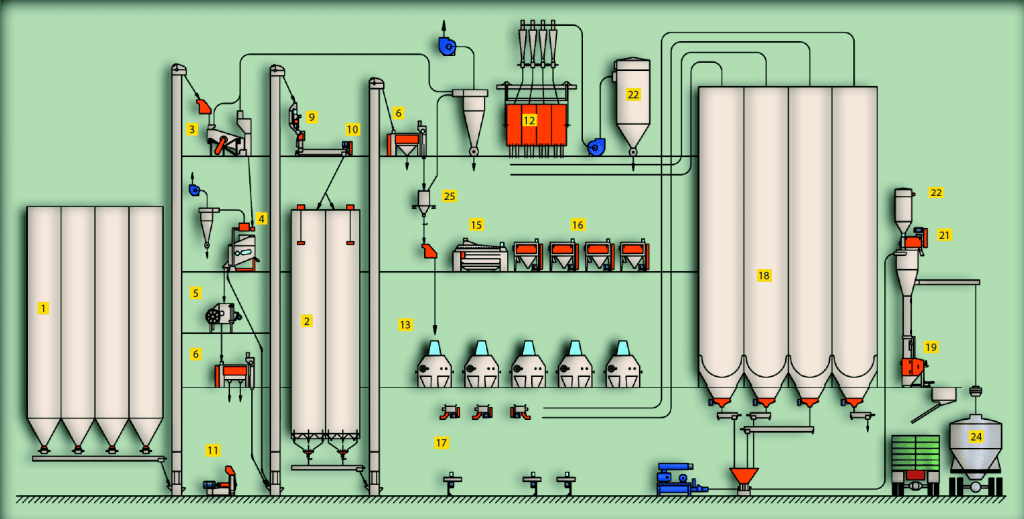
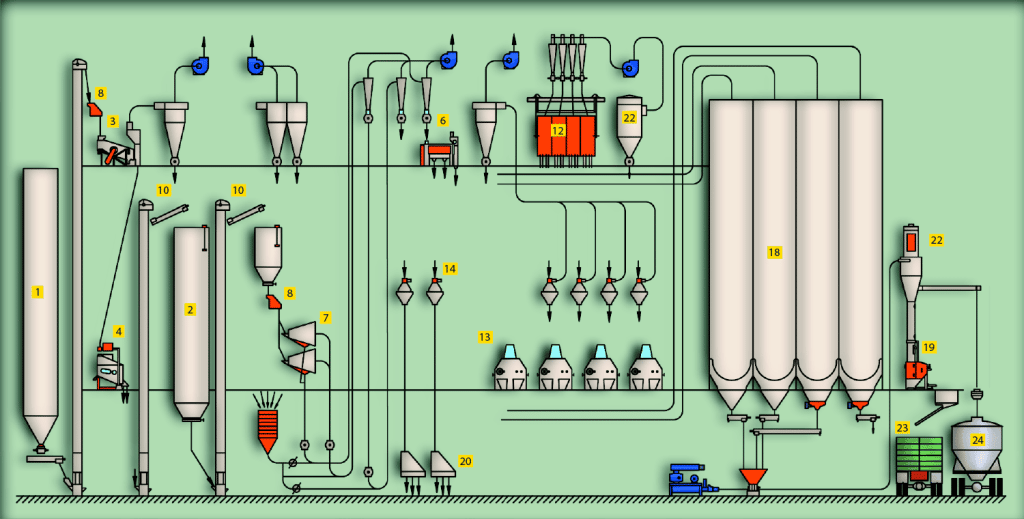
01 – Raw material silo
02 – Tempering silo
03 – Separator
04 – Specific gravity separator
05 – Classifier
06 – Scourer
07 – Desgerminator
08 – Magnetic separator
09 – Automatic dampening system
10 – Intensif damper
11 – Hammer mill
12 – Plansichter Sifter
13 – Roller mills
14 – Conical aspirator
15 – Purifier
16 – Brushing machines
17 – Detachers
18 – Storage silos
19 – Bagging machine
20 – Gravity separator
21 – Conical Sifter
22 – Sleeve filter
23 – Truck
24 – Tank truck
25 – Automatic Weigher
01 – Raw material silo
02 – Tempering silo
03 – Separator
04 – Specific gravity separator
05 – Classifier
06 – Scourer
07 – Desgerminator
08 – Magnetic separator
09 – Automatic dampening system
10 – Intensif damper
11 – Hammer mill
12 – Plansichter Sifter
13 – Roller mills
14 – Conical aspirator
15 – Purifier
16 – Brushing machines
17 – Detachers
18 – Storage silos
19 – Bagging machine
20 – Gravity separator
21 – Conical Sifter
22 – Sleeve filter
23 – Truck
24 – Tank truck
25 – Automatic Weigher
What products or yields can we achieve in a flour mill?
If we analyse each type of cereal or grain, we will see that we basically have in them, husk, endosperm and germ. Each of these parts has physical behaviour and properties, which are used to achieve the objective of separating them as well as possible from each other. For example, the shell becomes more flexible when wet, the germ clumps together when squeezed, and so on.
Inside of maize and wheat grain
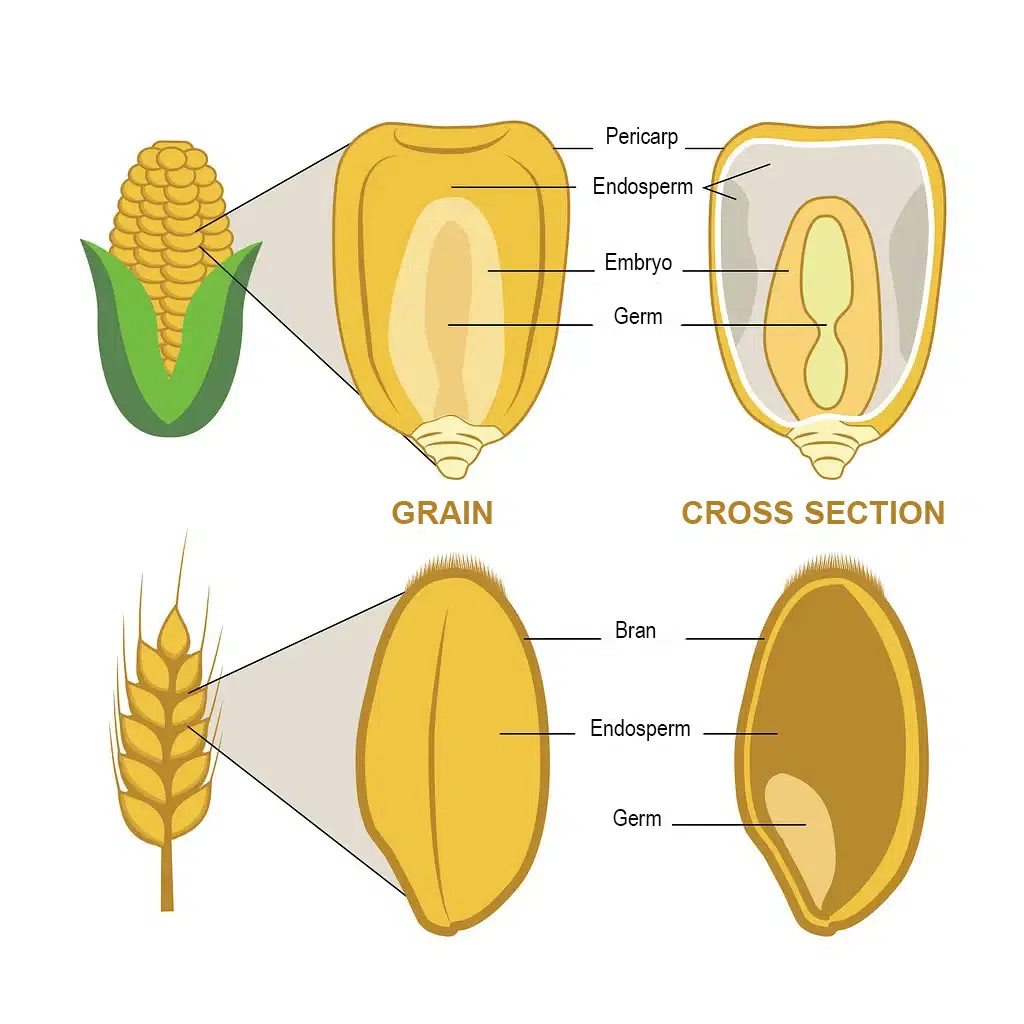
The endosperm of the grain, in turn, can be separated into the following milling components:
For example, in the case of common wheat:
- Bread wheat flour or 000
- Pasta wheat flour or 0000
- wheat semolina or semolina
- And in the case of maize
Maize semolina or polenta
Gritz or grits
Fine maize flour
In this way, the objective of the treatment that we will give to the cereal in the flour mill will be to separate its different parts, with the greatest possible precision and yield. If we look at the figure below, we will see that the wheat in it has a maximum of endosperm that can be transformed into baker’s flour or 000, pasta flour or 0000 and semolina. In the case of this wheat, the ideal yield is 83%. In short, the more complex and studied the mill diagram is, the closer we can get to this value. We also depend on a cultural factor in each country or region, which limits us with respect to the amount of husk or ash that we can accept in the flour.
Parts of wheat grain
83% – Flour and meal
14% – Bran or bran + bran bran + semolina or semithin
3% – Germ
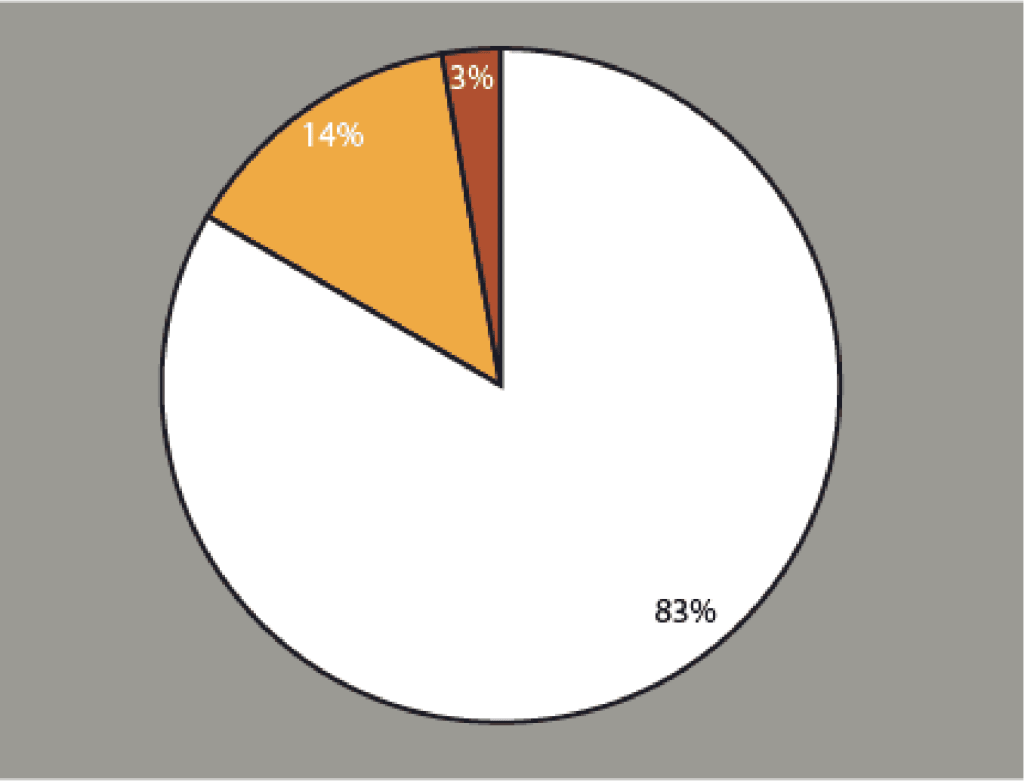
Extracted from Wikipedia
For more than 90 years, Prillwitz has been involved in the construction and installation of wheat and corn flour mills for the milling industry worldwide. We can not only supply you with all types of machinery and equipment for grain processing, but also, and above all, advise you in the realisation of your project.
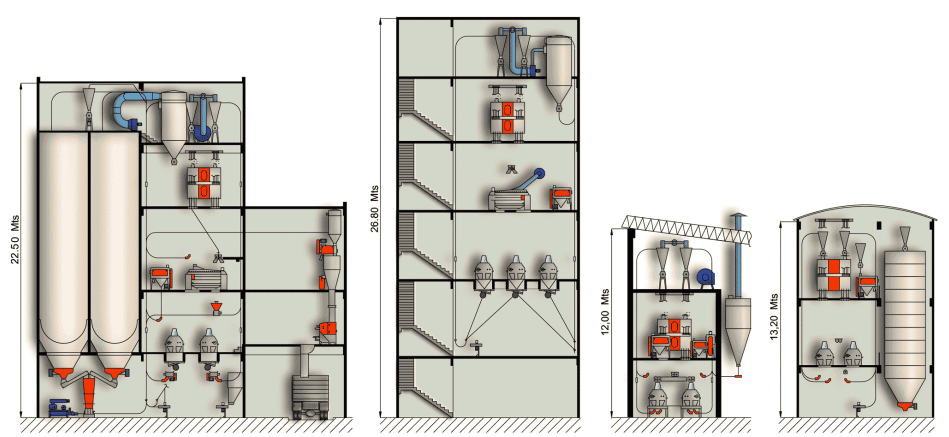
We have the necessary experience for the development of turnkey projects and their complete implementation, starting with the building and layout of the flour mill and ending with the automation of its different processes.
Products that we can process or grind to obtain high-quality flours with high yields.
-
- Soft wheat or bread wheat
- Hard wheat or durum wheat
- Semi-hard wheat
- Flint corn
- Semi-flint corn
- Yellow corn
- White corn
- Oats
- Rye
- Barley
- Soybean
-
-
- Bran
- Fine bran
- Middlings and fine middlings of wheat
- Semolina
- Break flour
- Feed flour
- Corn semolina
- Wheat semolina
- Polenta
- Corn grits
- Wheat, corn, soybean, etc. flour
- Germ
- Starch
- Husks
-
